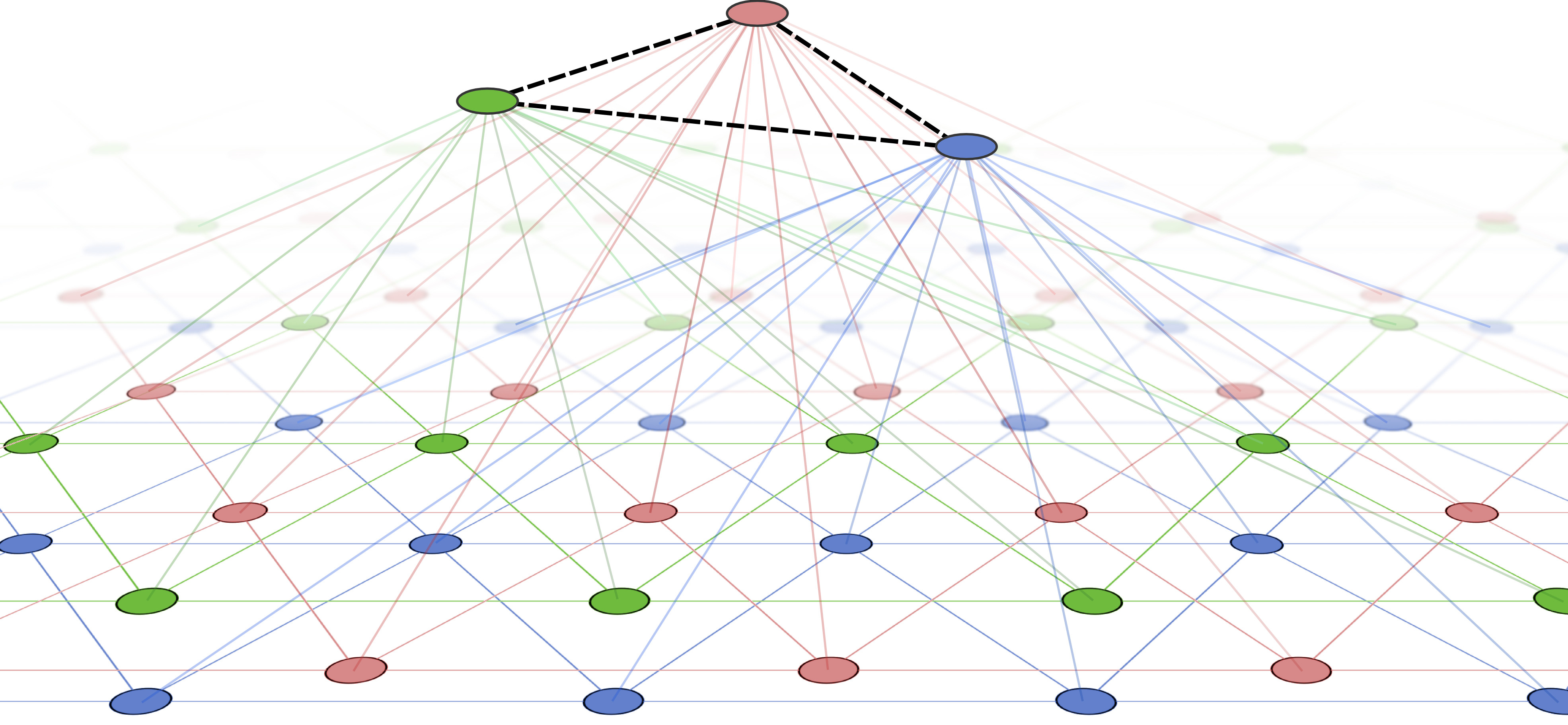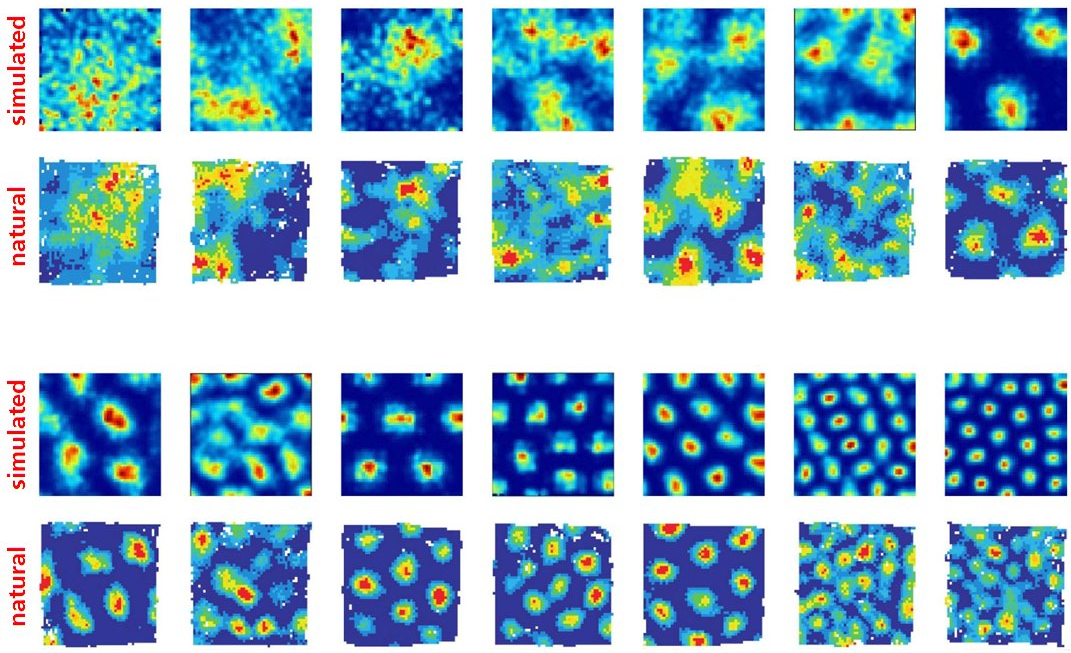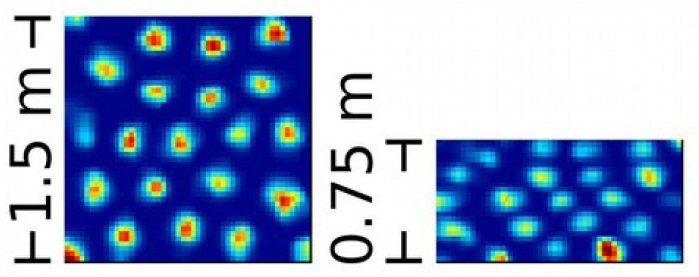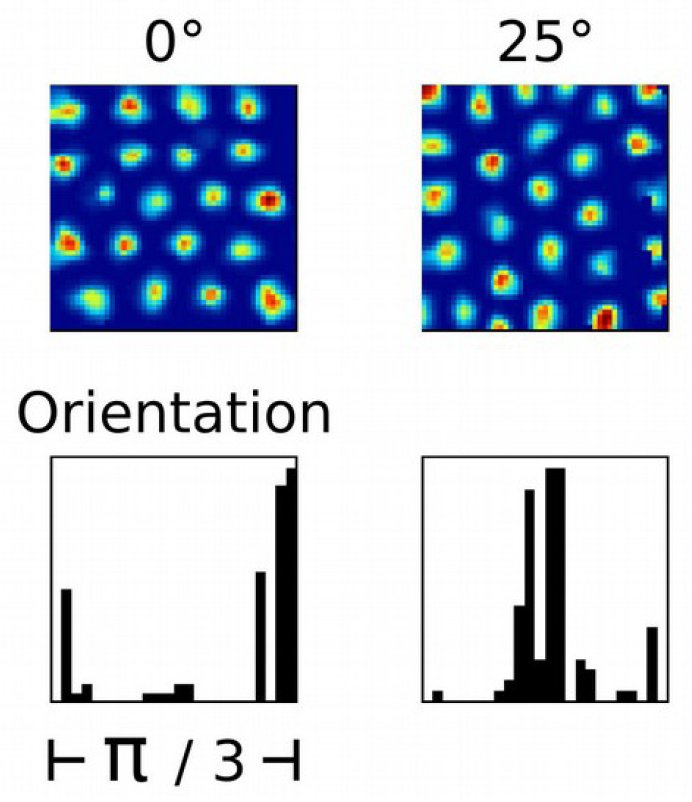- FernUni
- Faculty of Mathematics and Computer Science
- Human-Computer Interaction
- Research
- 5_CompNeurosci
- Modeling Grid Cells with a Rec...
Modeling Grid Cells with a Recursive Growing Neural Gas
Jochen Kerdels, Gabriele Peters
Publications:
- Jochen Kerdels and Gabriele Peters,
Efficient Approximation of a Recursive Growing Neural Gas,
in: Computational Intelligence: International Joint Conference, IJCCI 2018 Seville, Spain, September 18-20, 2018 Revised Selected Papers, Springer, pp. 109-127, 2021. - Jochen Kerdels and Gabriele Peters,
A Noise Compensation Mechanism for an RGNG-based Grid Cell Model,
in: Computational Intelligence. Studies in Computational Intelligence, Vol. 792, Springer, pp. 263-276, 2019. - Jochen Kerdels and Gabriele Peters,
A Possible Encoding of 3D Visual Space in Primates,
in: Computational Intelligence. Studies in Computational Intelligence, Vol. 792, Springer, pp. 277-295, 2019. - Jochen Kerdels and Gabriele Peters,
A Survey of Entorhinal Grid Cell Properties,
in: arXiv e-prints (Quantitative Biology, Neurons and Cognition), Vol. arXiv:1810.07429, 2018. - Jochen Kerdels and Gabriele Peters,
A Grid Cell Inspired Model of Cortical Column Function,
Proceedings of the 10th International Joint Conference on Computational Intelligence, Volume 1 (IJCCI 2018), SciTePress, pp. 204-210, Seville, Spain, September 18-20, 2018. - Jochen Kerdels and Gabriele Peters,
Simulation von Gitterzellen als Spezialfall eines allgemeinen neuronalen Verarbeitungsprinzips,
Informatik Spektrum, Springer, Vol. 41(6), cover art, p. 451-452, 2018. - Jochen Kerdels and Gabriele Peters,
Entorhinal Grid Cells May Facilitate Pattern Separation in the Hippocampus,
9th International Joint Conference on Computational Intelligence (IJCCI 2017), Funchal, Madeira, Portugal, November 1-3, 2017. - Jochen Kerdels and Gabriele Peters,
Modelling the Grid-like Encoding of Visual Space in Primates,
8th International Conference on Neural Computation Theory and Applications (NCTA 2016), Porto, Portugal, November 9-11, 2016.
► best paper award - Jochen Kerdels and Gabriele Peters,
Noise Resilience of an RGNG-based Grid Cell Model,
8th International Conference on Neural Computation Theory and Applications (NCTA 2016), Porto, Portugal, November 9-11, 2016.
► nominated for best paper award - Jochen Kerdels,
A Computational Model of Grid Cells based on a Recursive Growing Neural Gas,
Dissertation at the Faculty of Mathematics and Computer Science, University of Hagen, 2016.
► awarded with the Fakultätspreis 2017 for the best scientific work 2016 at the faculty of mathematics and computer science at the University of Hagen - Jochen Kerdels and Gabriele Peters,
A New View on Grid Cells Beyond the Cognitive Map Hypothesis,
8th Conference on Artificial General Intelligence (AGI 2015), LNCS 9205, Springer, pp. 283-292, Berlin, Germany, July 22-25, 2015. - Jochen Kerdels and Gabriele Peters,
A Computational Model of Grid Cells based on Dendritic Self-Organized Learning,
International Conference on Neural Computation Theory and Applications (NCTA 2013), SciTePress, pp. 420-429, Vilamoura, Portugal, September 20-22, 2013.
► nominated for best paper award
All publications are available from Publications.
See also coverage of this project in Public Media and FernUni Media.

Summary
The entorhinal cortex of rats contains neurons, called grid cells, that exhibit a very peculiar behavior. Discovered about a decade ago, the activity of these cells was found to correlate with the allocentric position of the animal by forming a regular, hexagonal lattice of firing fields across the entire environment. Due to this unusual behavior and the proximity of the entorhinal cortex to other brain regions that also contain cells with spatially correlated activity grid cells are commonly recognized as an important element of a neuronal system for navigation. Existing computational models of grid cells share this view and typically describe the behavior of grid cells as a path integration component of such a system.
Complementary to this view, we presented a new computational model of grid cells that does not assume that grid cells are a specialized component of a navigational system. Instead, it assumes that the activity of grid cells reflects a general principle by which neurons in higher order parts of the cortex process information. The proposed model extends the growing neural gas (GNG) approach by Bernd Fritzke into a recursive algorithm (RGNG) that describes the joint behavior of grid cells in a group as well as the processes within each individual cell. We demonstrated that this approach is able to model the characteristic behavior of grid cells. In addition, it is also able to model the behavior of other cells, which also exhibit grid cell-like firing patterns but whose activity does not correlate with the animal's location in the environment.
Recursive Growing Neural Gas (RGNG)
Our model describes a putative general principle by which neurons in higher-order parts of the cortex process information of arbitrary input spaces. We argue, that each neuron tries to represent its entire input space as well as possible while being in competition with its peers. To model this behavior we employed a novel, two-layer recursive growing neural gas to describe a group or module of grid cells. The top layer represents the interaction between individual grid cells, while the bottom layer models the processes within each cell.

Simulation Results



General Information Processing Scheme - Other Cells Than Grid Cells
Since the proposed model implements a general information processing scheme we are also able to model the behavior of non-grid cells that nevertheless exhibit hexagonal firing patterns. The activity of such cells does not correlate with the animal's allocentric position but, e.g., with their gaze position (Killian et al., A map of visual space in the primate entorhinal cortex, Nature, 2012). As far as we know our model is currently the only one that can describe the activity of such non-grid cell phenomena.
- Downloads:
- Research Report 2010-2013 (pdf)
- Forschungsbericht 2010-2013 (pdf)
- Lehrbericht 2010-2022 (pdf)
- Legal notice
- © FernUniversität in Hagen
 FernUniversität in Hagen, Faculty of Mathematics und Computer Science, Human-Computer Interaction, 58084 Hagen
FernUniversität in Hagen, Faculty of Mathematics und Computer Science, Human-Computer Interaction, 58084 Hagen

